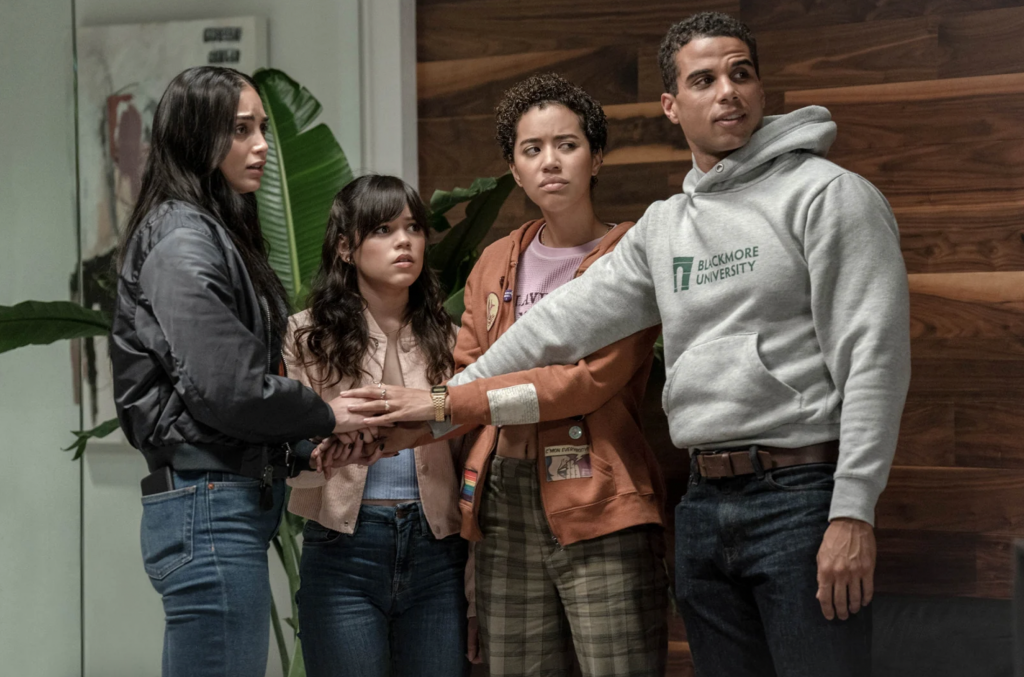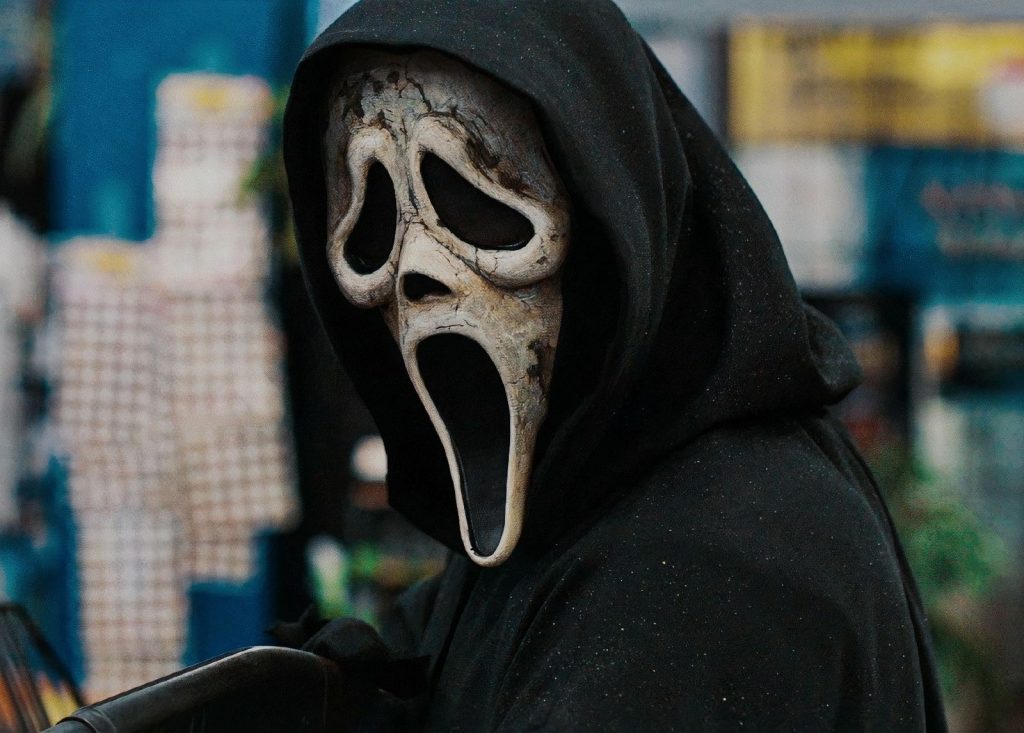Minor spoilers ahead
Slashers are back on the big screen with the newest installment of the re-upped Scream franchise. Despite mixed reviews for Scream 5, audiences came out in droves during opening weekend to propel the “requel sequel” to the highest box-office debut of the franchise altogether. With callbacks, commentary, and action all sharp as knives, Scream 6 hits every beat we’ve come to expect from the series. Yet, its unique treatment of the Final Girl, a familiar trope whose magnetism often fades in modern slashers, may be the most incendiary design to hit the franchise since its return.
Scream 6 picks up approximately one year after the events of Scream 5. Our uncertain heroine, Sam (Melissa Barrera), is failing her way through therapy. Gen-Z’s scream queen, Jenna Ortega, reprises Tara in her first year of college, where she strives to be just a normal girl. The remaining survivors of her friend group, Chad and Mindy, round out the main cast to forge a flimsy Core Four with limited group chemistry. As always, the supporting cast comprises a slew of secondary characters who may or may not be murderous fiends. This time around, though, they contribute shockingly little intrigue to the story. New roommates, love interests, and a dubious police officer jump into the ensemble with the collective screen presence of a house plant.

To its credit, Scream 6 has the greatest set pieces of the entire franchise. The film took perfect advantage of its city setting by employing crowds, alleys, subways, and city lights to maximize thrill. In the final act, we follow Mindy (Jasmin Savoy Brown) alone in a stuffed metro. It feels as though there are more people in this subway car than there are inhabitants of Woodsboro. The audience panics alongside her as lights flicker in and out, Ghostface masks flood the car, and cellphone service is, of course, unavailable. It’s a rousing composition and, shockingly, only one of three electrifying attack scenes in the film.
Sadly, the big reveal is one of the least satisfying unmaskings I’ve yet to witness. Not only were the killers’ motives uninteresting (and a carbon copy of one of the previous films), but the acting throughout the final chase scene was painful. Scream 6 began to feel like a parody of its predecessors as soon as the Ghostfaces pulled off their masks. One actor indulges in a series of especially wacky facial expressions and intonations in the sequences following their confession. The others, while comparatively more grounded, were hardly convincing.
Despite its weaknesses, the movie manages to set the stage for a shining finale to the new trilogy by subverting the classic Final Girl trope. With origins dating back to the 1970s, the Final Girl has evolved into a veritable fixture of the horror genre. While its feminist ties are dubious, to say the least, films like A Nightmare on Elm Street and Scream are gratifying to female audiences because of their strong heroines. In both films, the heroines are ordinary teenage girls pulled into terror, and despite an outward vulnerability, they develop the courage and intelligence to crush their tormentors.
But one formula can only last for so long. Female heroines in contemporary horror are often written in direct opposition to the damsel in distress of horror’s past. Erin of You’re Next comes to mind as a Final Girl who’s equally matched to—or stronger than—her villains. In last year’s X, Maxine escapes the farm with barely a scratch. While an all-powerful Final Girl can be entertaining to watch, she seems mystical compared to the Nancy Thompsons who precede her. The single-handed bloodbath of You’re Next is thrilling yet too outlandish to feel like a true triumph. In effect, the trope begins to lose its accessibility; it’s hard to relate to a superhero.

Scream 6 subverts the canon altogether. Unlike the classic Final Girls, Sam Carpenter needs her supporting cast to survive. She’s also far from the girl next door; the internet has condemned her, she has no friends, and her lifestyle is startlingly reclusive. What sets her apart as a lead character is her total unpredictability. Scream 5 characterizes Sam as a protective yet guarded heroine with a bitter family history. But since the Woodsboro killings, her inner turmoil has begun to bleed through the cracks. The first ten minutes of the film establish that her own therapist is too unsettled by her psychology to keep her as a client. Sam admits she enjoyed stabbing Richie— her last assassin— more than she thought was ever possible. In the final act, she becomes entranced by bloody knives and masks before a hallucination briefly tempts her toward evil. Though she refuses to break, how long can she fight against her subconscious? Sam Carpenter is the only (maybe) Final Girl I would ever suspect to be the villain. With ongoing hallucinations, lifelong trauma, and a taste for murder (self-defence!), I predict Scream is setting up its Final Girl for an unprecedented antihero arc, and I’m eager to see how it plays out.
Scream (1996) is undoubtedly one of the greatest horror movies of all time, and every successive installment has been charming in its own right, but none have come close to topping the original. Far from a criticism, this is their greatest strength; The sequels embrace that they are all fighting for second place, allowing them the freedom to take risks. The franchise is committed to keeping the audience on its toes. Will Sam be the last one standing by endurance or by bloodshed? For now, all we can do is speculate. In sum, Scream 6 can be defined by its breathtaking kills, unreliable heroine, and highly questionable finale; a lively chase to an middling destination.
